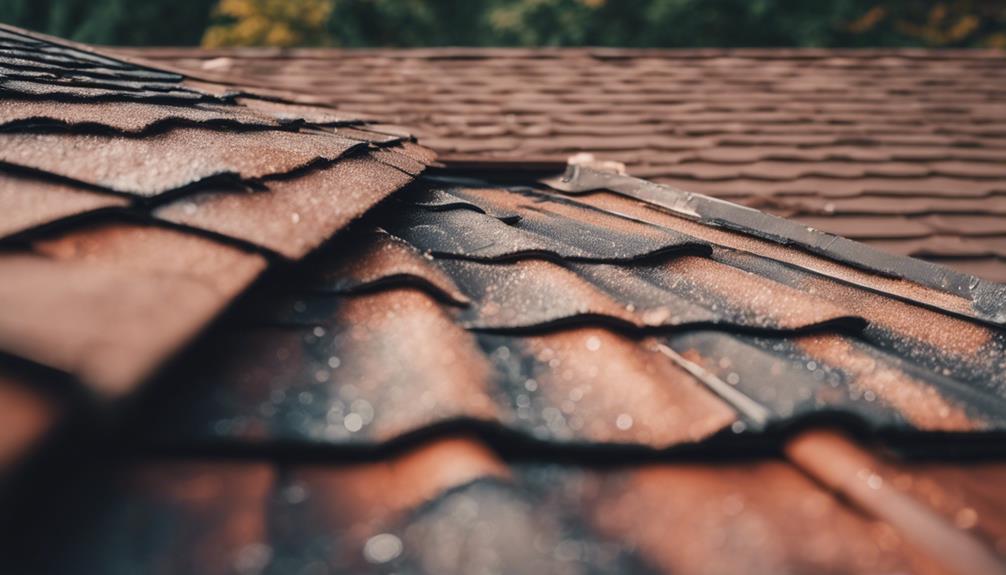How to Know When to Get a New Roof?
Curious about when to replace your roof? Discover the need for a Roof Replacement.
A roof is a crucial component of a home’s structure, protecting its inhabitants from the elements. Knowing when to perform a roof replacement is a significant decision. While visible signs like damage or leaks are clear indicators, other factors, such as the roof’s age and overall condition, play a role.
It’s essential to recognize the subtle signs of roof deterioration and understand the potential consequences of delaying a replacement. By carefully assessing these factors, homeowners can make informed decisions to protect their property and investments.
What Are the Visible Signs of Roof Wear and Tear?
A thorough roof inspection is essential for determining if a replacement is necessary. Several key indicators signal potential problems:
- Shingle Deterioration: Missing, cracked, or curling shingles compromise the roof’s protective barrier.
- Moss and Algae Growth: These organisms indicate excessive moisture and potential underlying issues.
- Structural Damage: Sagging or dipping areas suggest weakened roof decking and require immediate attention.
- Roof Age: Older roofs are more susceptible to wear and tear, increasing the likelihood of needing replacement.
By carefully examining these factors, homeowners can proactively address roofing issues before they escalate into costly repairs.
How to Identify Signs of Water Damage or Leaks in Roofs?
Identifying water damage is crucial for determining the extent of roof deterioration. Signs of water intrusion include:
- Interior Indicators: Discolored ceilings, peeling paint, sagging areas, and musty odours point to potential leaks.
- Rooftop Evidence: Soft spots, cracked or missing shingles, and damaged flashings around chimneys, vents, and skylights indicate water infiltration.
- Gutter Inspection: Clogged or damaged gutters can contribute to water buildup and roof damage.
Early detection and repair of water damage prevent costly structural issues and protect your home’s integrity.
How Do Environmental Factors Affect the Lifespan of a Roof?
Sun, rain, snow, wind, and temperature swings all take a toll on roofing materials. Over time, exposure to the sun’s harmful UV rays can cause shingles to become brittle and crack. Heavy rain can lead to leaks, while snow and ice can create stress on the roof’s structure.
Strong winds can dislodge shingles, and extreme temperature changes cause materials to expand and contract, leading to wear and tear. Understanding how these environmental factors affect your roof is crucial for determining when it’s time for a replacement.
What Is the Importance of Timely Roof Replacement?

Timely roof replacement is essential for safeguarding the structural integrity and longevity of a building’s roofing system. Over time, roofs deteriorate due to wear and tear from various elements such as harsh weather conditions, UV radiation, and ageing. Ignoring the signs that indicate the need for a roof replacement can lead to significant issues like water leaks, mould growth, and even structural damage.
A well-maintained roof is essential for protecting a building’s structure and its occupants. Over time, roofs deteriorate due to weather, age, and general wear and tear. Ignoring the need for replacement can lead to costly water damage, mould growth, and structural issues.
By addressing roof replacement promptly, homeowners can protect their investment, enhance property value, and benefit from modern roofing materials that offer improved durability and energy efficiency. Regular inspections and professional assessments are crucial for determining when it’s time for a new roof.
Frequently Asked Questions
How Can I Determine if My Roof Is Properly Ventilated?
Proper roof ventilation is important for maintaining the structural integrity of a building. To determine if your roof is adequately ventilated, examine the intake and exhaust vents, make sure they are unobstructed, and consider consulting a professional roofer for a thorough assessment.
Are There Any Government Rebates or Incentives Available for Roof Replacement?
Government rebates or incentives for roof replacement vary by location and program availability. Consult local authorities, energy efficiency programs, or tax credits to explore potential savings. Professional roofers can provide guidance on eligible options.
Can I Install Solar Panels on My Roof Before or After a Replacement?
Yes, solar panels can be installed on a roof before or after replacement. Consider factors like roof age, condition, and panel compatibility. Discuss installation with a reputable solar provider for proper assessment.
What Are the Benefits of Upgrading to a Higher Quality Roofing Material During Replacement?
Upgrading to a higher quality roofing material during replacement can enhance energy efficiency, increase durability, improve aesthetics, and potentially increase property value. It offers superior protection against weather elements and may lower long-term maintenance costs.
How Can I Extend the Lifespan of My New Roof After Replacement?
To extend the lifespan of a new roof after replacement, regular maintenance is essential. Inspect for damage, clean gutters, trim overhanging branches and guarantee proper ventilation. Address any issues promptly to prevent small problems from escalating.